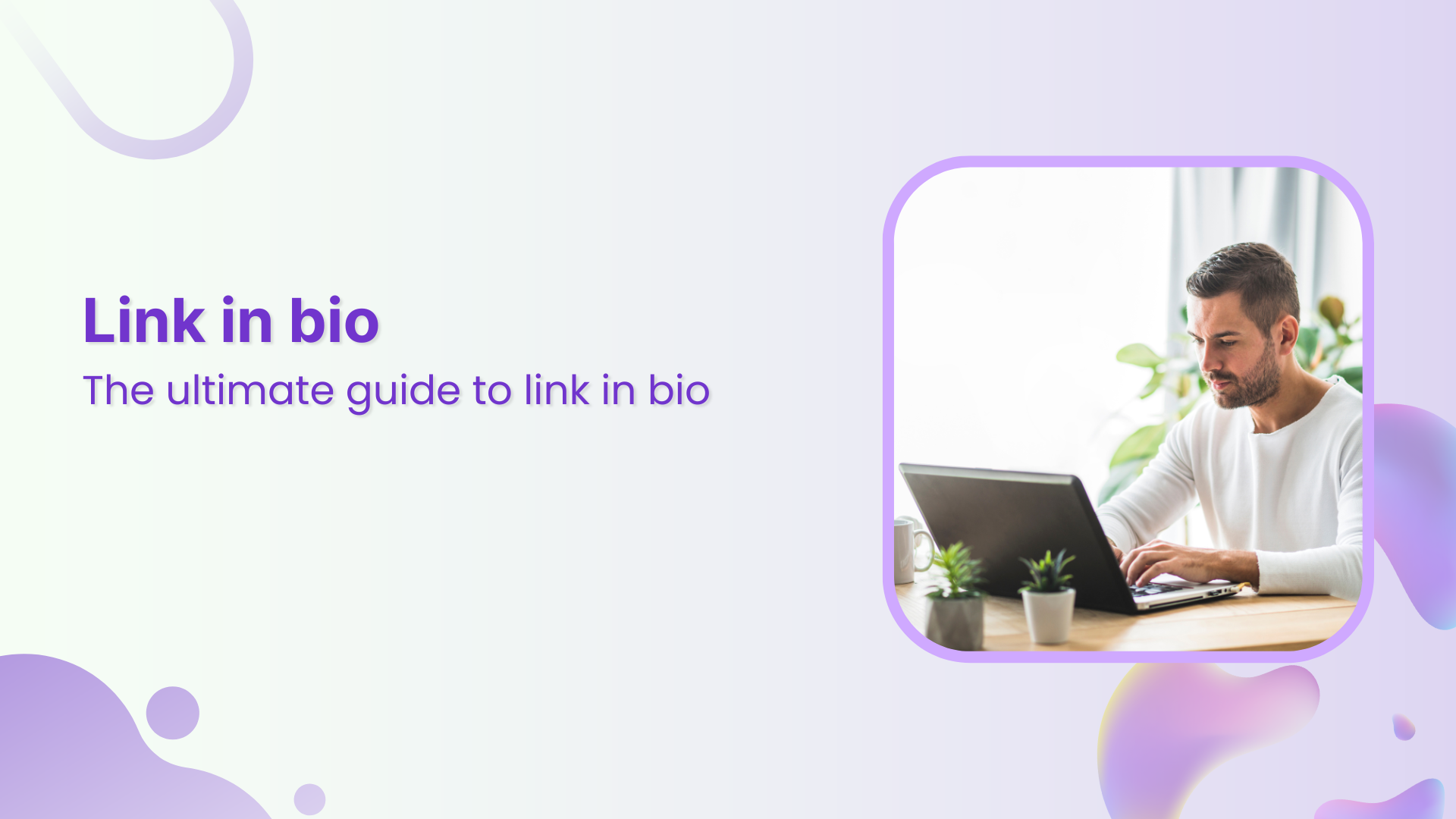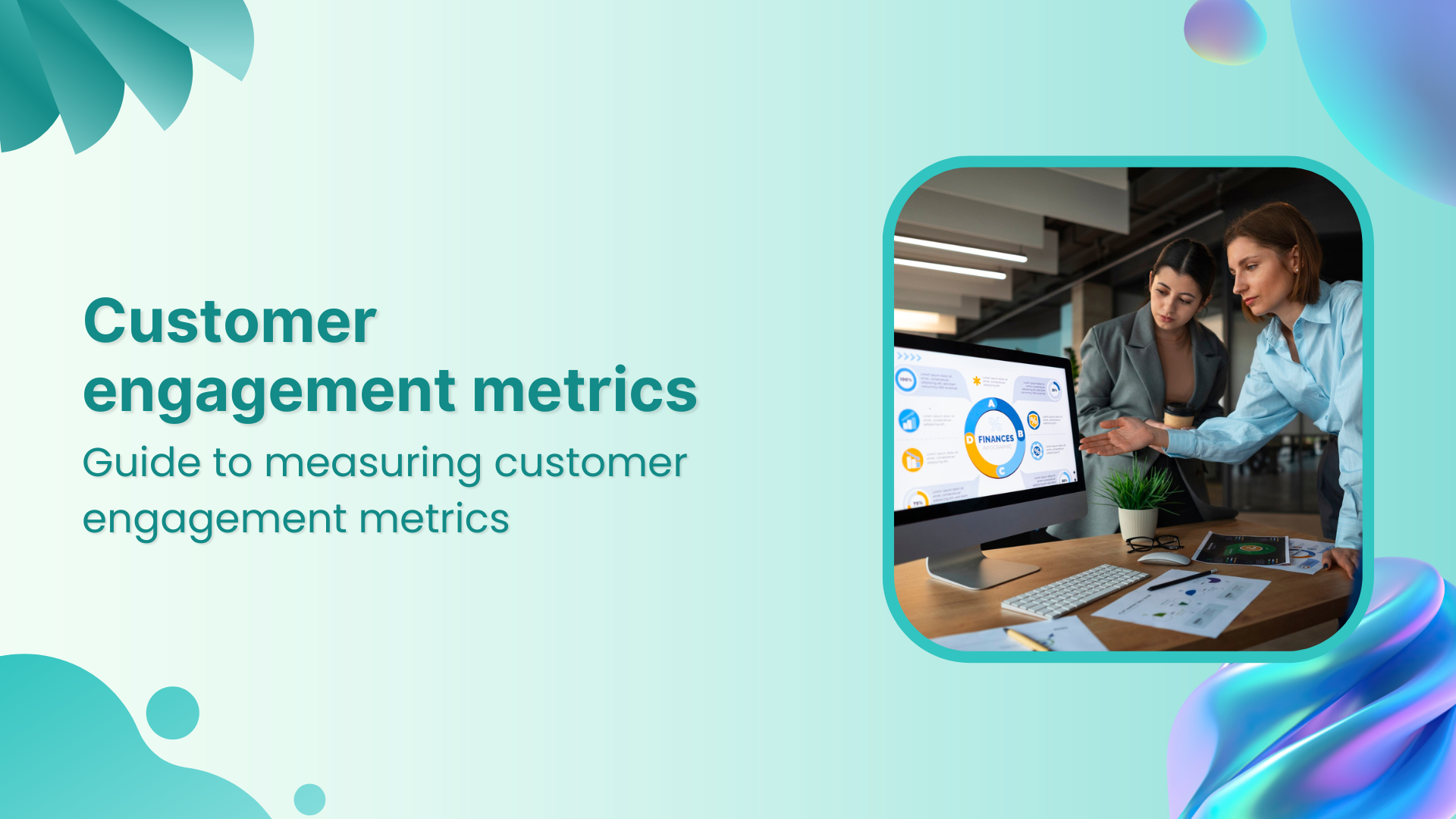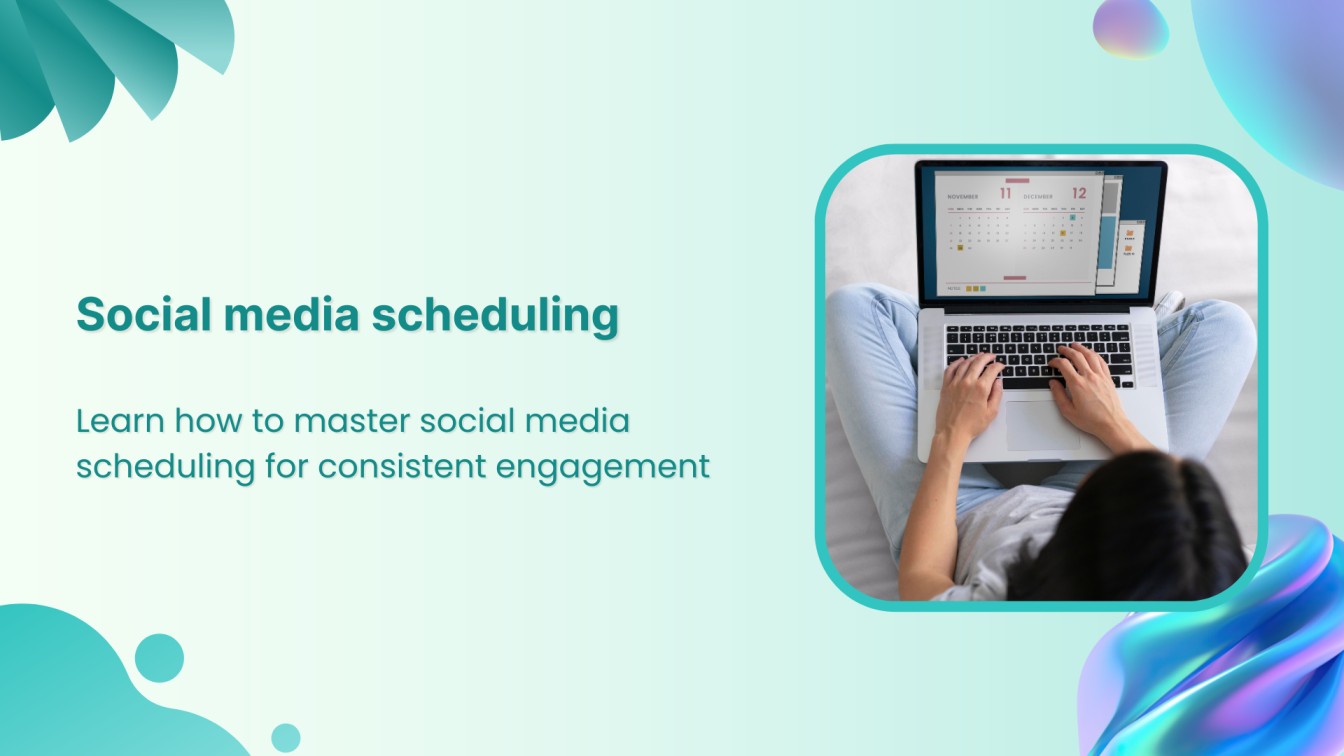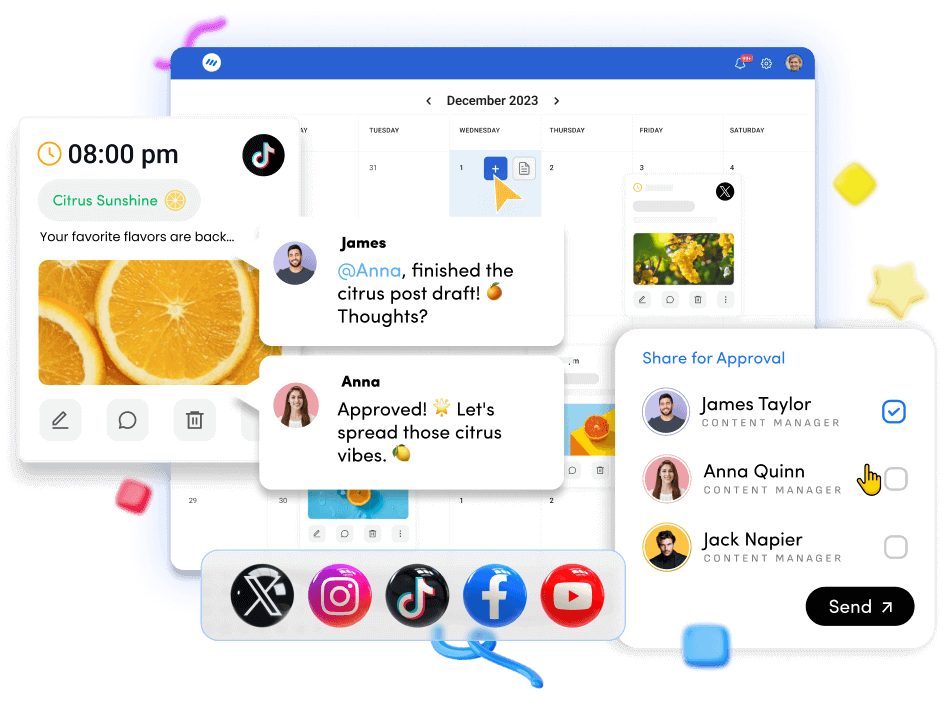🚀 Introducing Contentpen – Your AI-Powered content assistant!Join the waitlist.
Effective tips to get better at audience segmentation
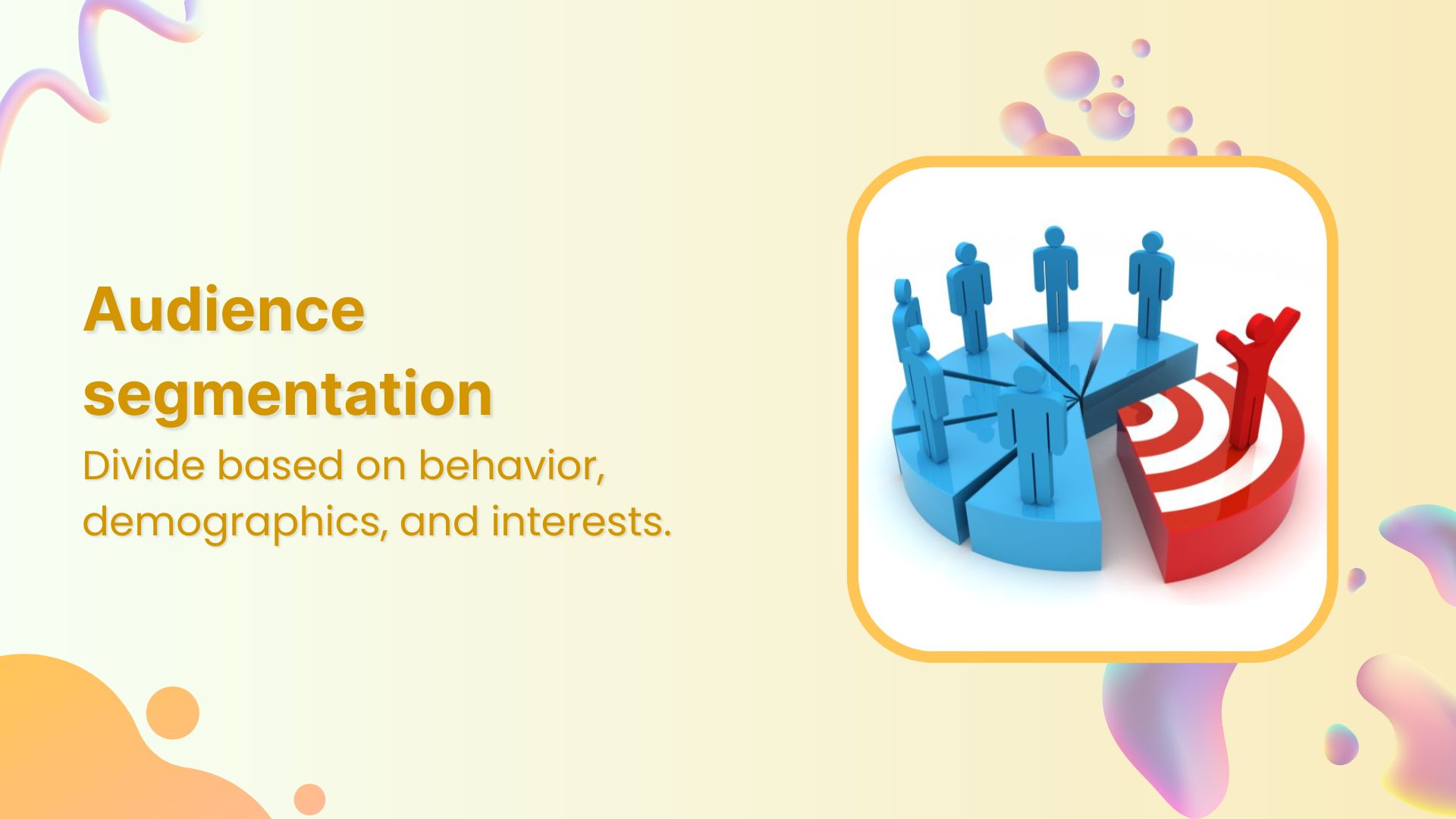
Digital marketing is on the rise. Its core principle is to reach the relevant, targeted audience, which is impossible unless the target audience is identified.
The challenge here is to devise a strategy for presenting the best-suited offer to the right audience. This is where “audience segmentation” comes in handy, as it helps identify a segment of the audience that might find the offer interesting.
Audience segmentation is equally essential in several areas of digital marketing, such as:
- Social media content creation
- Search and social media ads
- Email marketing campaigns
- Upgrade offers to free users
Let’s crack this topic open and understand every aspect of it!
What is audience segmentation?
Audience segmentation divides the broad audience base into smaller groups with common characteristics, behaviors, and priorities.
The purpose of audience segmentation is to group a group of people together, which helps a business reach, offer, and talk to them more conveniently.
One aspect of audience segmentation is to identify people with similar interests so that relevant content, products, and offers can better serve them.
It’s safe to say that social media marketing and audience segmentation are correlated, and audience segmentation sharpens the targeting in the marketing campaign.
Marketing doesn’t only mean offering prospective or existing customers something to buy; it’s a form of communication between a brand and the customer.
Brands and marketers can do marketing by:
- Creating a valuable piece of content that resonates with their target audience
- Publishing a helpful tutorial that solves a problem of their prospects
- Developing a solution-based product that relieves a pain point of the audience
- Running an awareness-based social media ad campaign to spread a message
- Collaborating with industry-relevant influencers to expand their brand reputation
Example: Take a look at the screenshot from an email marketing software:
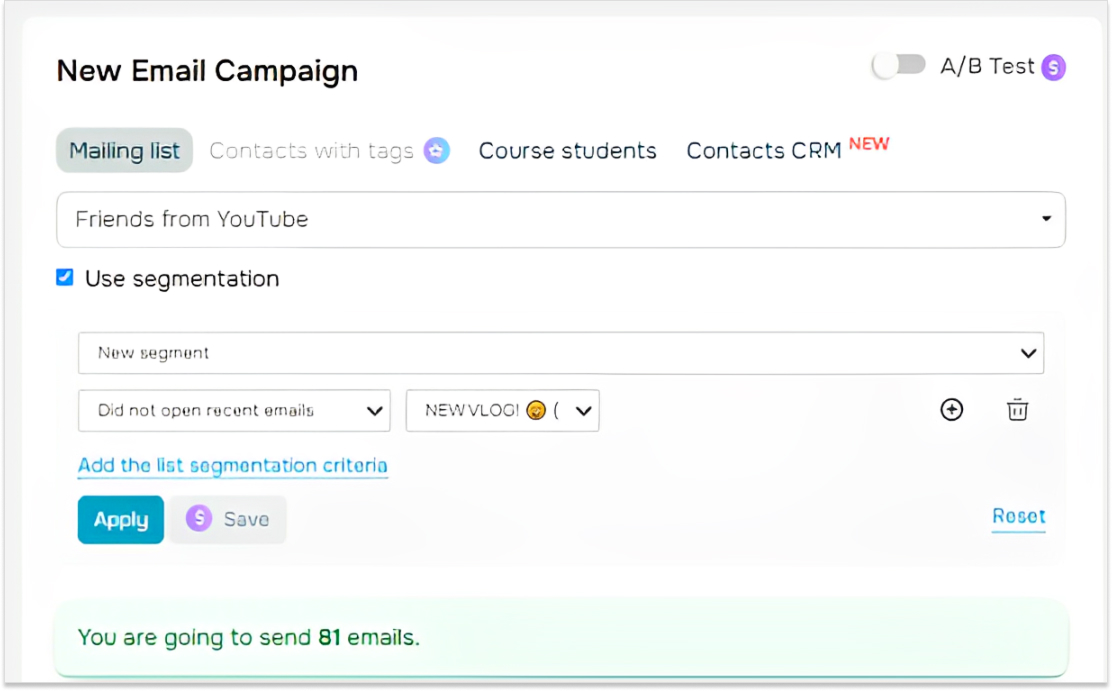
When the segmentation option is turned on, the sender has multiple options to choose the right segment to target. For instance, the user in the example chose to target the email subscribers who hadn’t opened the recent emails. Furthermore, the user specified which recent emails’ non-responding subscribers they intend to target.
Therefore, the “NEW VLOG” email campaign would only be sent to subscribers who didn’t open the previous one.
Plan, schedule, share, and analyze content for 15+ social media channels.
Try ContentStudio for FREE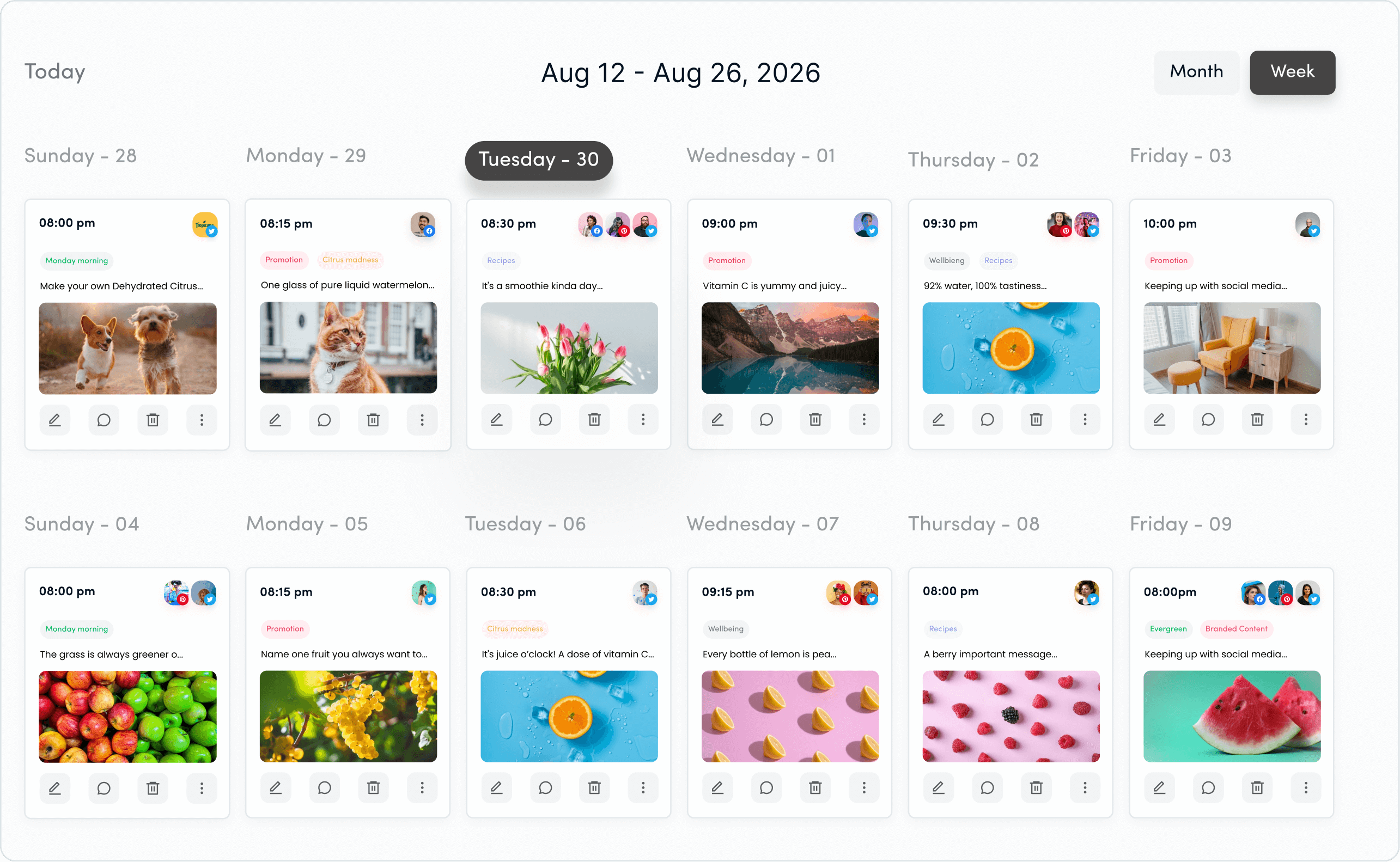
Why is audience segmentation important?
The more we explore the “why” of audience segmentation, the more it makes sense. Perhaps the reason is that it’s a simple yet effective step that helps you understand your audience better.
Here are the benefits of audience segmentation that explain why it’s crucial to divide your audience based on their behaviors, mindsets, and actions:
- Separate the audience to make them identifiable
A key benefit of audience segmentation is that it initiates customer or subscriber sorting, which clarifies audience management. After sorting through an audience, you’re almost ready to bracket them in perfect order.
For example, Jared Bauman knows about this, which is why he mentions a footnote on his email newsletter that explains why the subscriber is receiving his email. Take a look:
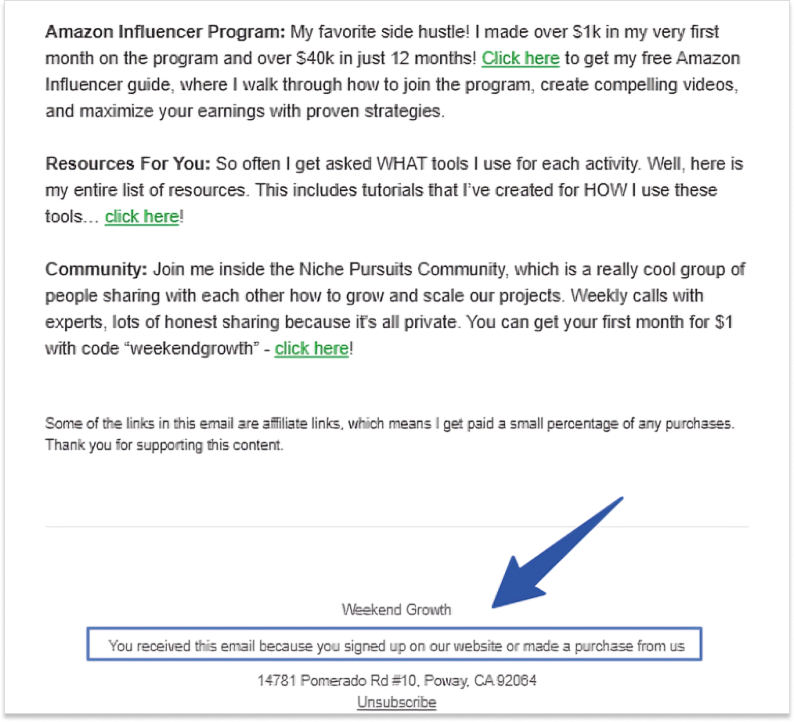
The upside of this strategy is that you know who they are, what they like, and why they joined your community or email list. This kind of organizing has long-lasting effects on any business.
- Group of people with common interests together
Another benefit (or step two after making your audience identifiable) is that now you can easily group people based on their interests, behavior, or actions. This way, you can communicate with them, create offers for them, and manage a specific audience segment separately.
Digital marketers or social media influencers often survey their email newsletter subscribers and try to group them into a specific group or segment on the same email list. The purpose is the same: They want to group people with common interests or tastes.
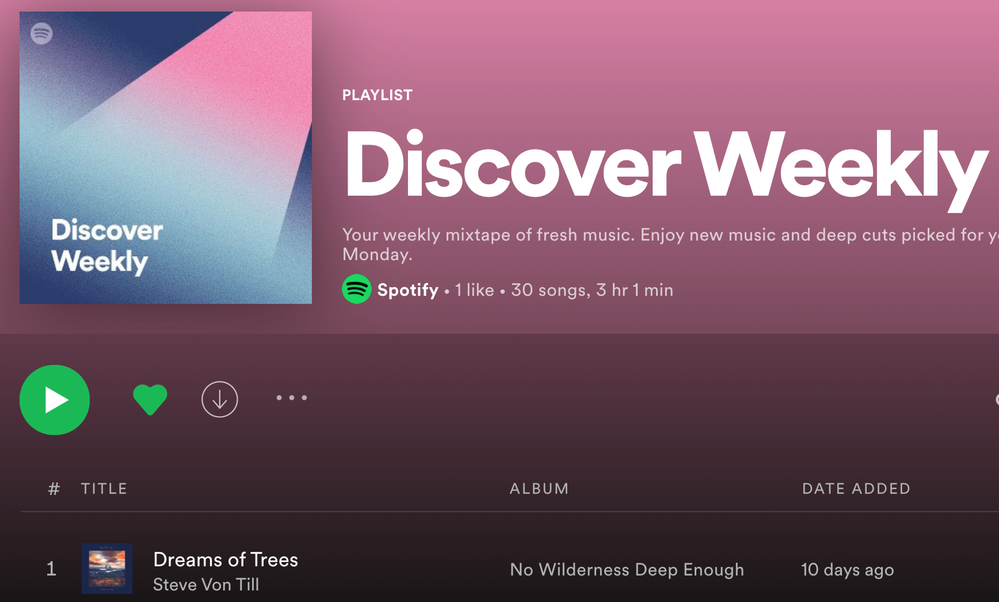
Spotify’s personalized playlists are the best example. It segments its users based on their music preferences, listening habits, and favorite genres. Then, it curates personalized playlists like “Discover Weekly” or “Release Radar,” featuring songs and artists that match their taste.
- Make targeting easier based on the audience preferences
Audience segmentation does make targeting easier than ever. Since you have personally vetted the audience or everyone joined in individually for a reason, it’s easier to communicate with them.
The reason behind this phenomenon is that when you have a bunch of people who want the same thing under a single umbrella, it’s way easier to present your offer than to openly announce it to everyone.
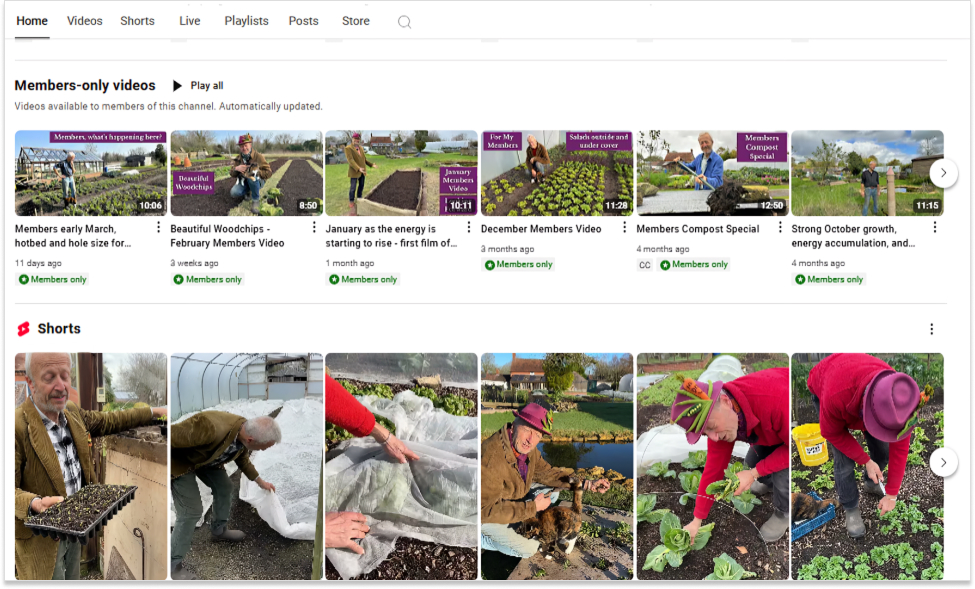
Example: Charles Dowding creates some members-only videos on his YouTube channel. Those unique videos are only accessible by the channel’s paid members, who get this privilege because they opted for a paid membership. Hence, Charles makes those targeted videos just for the members.
- Cater to each segment with tailored offers
One aspect of audience segmentation is that it enables brands and marketers to target specific audiences and provide them with tailored offers based on their actions or behavior.

Example: Netflix sends out tailored email newsletters to the subscribers to entice the audience to come back to either finish where they left off or rejoin the streaming platforms if they have unsubscribed recently.
- Analyze each segment’s buying decisions with great care
Another benefit of audience segmentation is that you can monitor their purchase decisions as you have grouped them based on their common interest.
Usually, e-commerce stores track customers’ buying behaviors and recommend relevant products based on their previous or current purchases.

For instance, Amazon recommends relevant products to buyers by saying, “Customers who bought this item also bought.” It triggers the thought process in customers’ minds that they may also need these products.
Audience segmentation types
There are several types of audience segmentation, but five of them are the most common. Let’s take a quick look at them:
1. Demographic segmentation
It’s a type of segmentation that deals with audience distribution based on age, income, or location. When an audience is segmented on any of these criteria, it’s considered demographic segmentation.
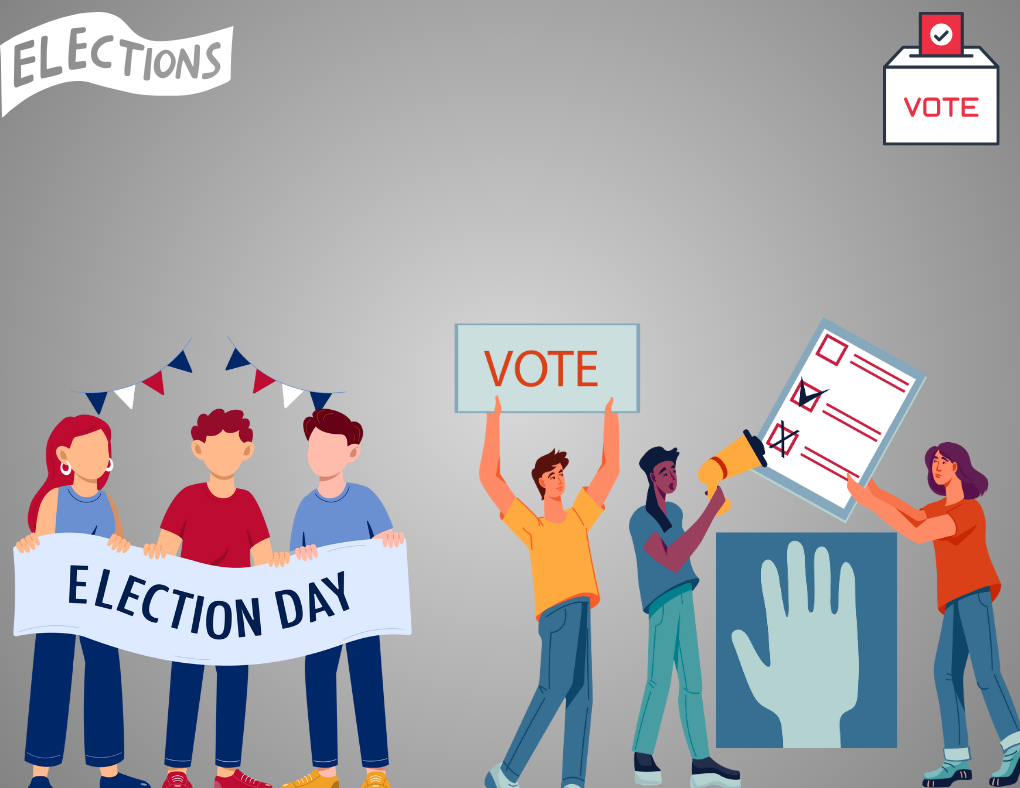
For instance, if a by-election is held in a constituency, independent surveyors usually apply demographic segmentation to identify the eligible voters in the constituency. The legal voting age is a minimum of 18 in most countries, so they easily segment the audience below 18 and subtract that from the total eligible voters in the constituency.
2. Behavioural segmentation
Behavioral segmentation is far more profound than demographic segmentation as it goes one step further into the funnel. It creates a division between different types of respondents based on their behavior.
Here’s an example:
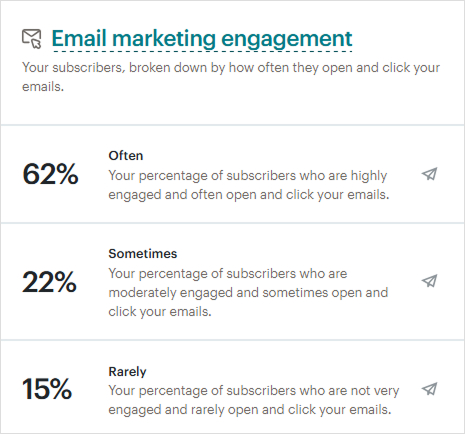
This email marketing engagement report explains the percentage of the audience that opens emails often, sometimes, and rarely. It was generated based on the behavior of the email subscribers.
3. Psychographic segmentation
It’s the type of segmentation in which you classify a segment of the audience based on your interpretation of their preferred choices, including their interests, hobbies, social norms, and patterns.
Since psychology studies the mind, top brands use it in marketing. One way of using it in marketing is by sponsoring top athletes.

For instance, when Nike was Roger Federer’s sponsor, this lifestyle and sports brand was the first choice of millions of Federer’s fans across the globe as Nike was associated with their favorite Tennis player.
4. Technographic segmentation
Technographic segmentation is a type in which the audience is grouped based on hardware or software usage. In other words, it’s a way of singling out a specific audience segment based on their specific software or hardware choice.
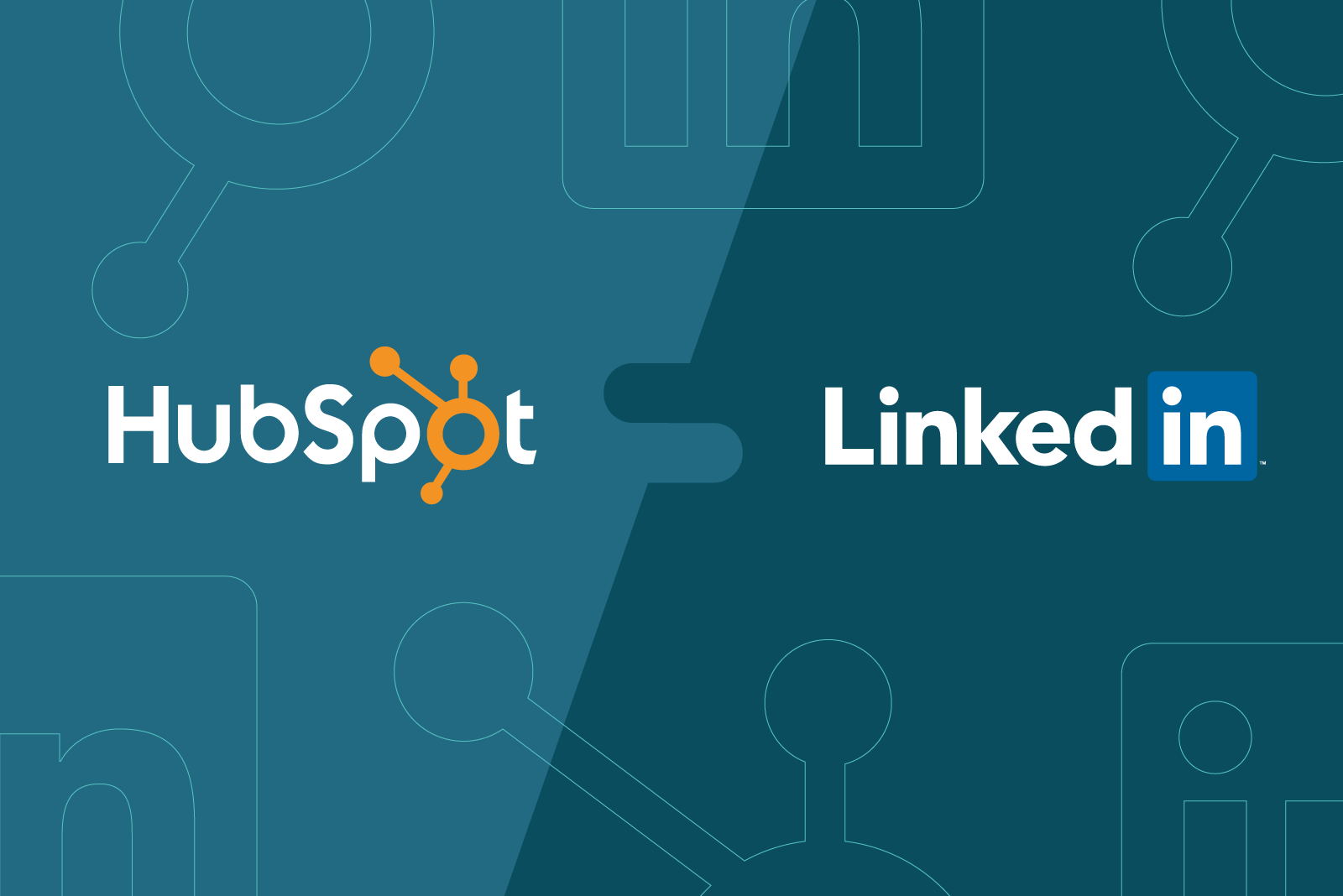
For example, LinkedIn Ads target users of HubSpot and Salesforce. LinkedIn uses technographic data to target businesses based on the software they use.
5. Geographic segmentation
The name says it all—geographic segmentation targets the audience based on their physical location, such as town, city, state, or country. It targets the audience based on a specific territory without notifying the rest.

For example, when the internet company makes some upgrades for a specific area in the city, they only reach out to the particular audience (in the town) that could be affected by the upgrades to apologize and explain the whole thing. Moreover, they tell them the exact time and date of the service outage or disturbance in the service quality. That’s geographic segmentation for you.
Essential tips for more effective audience segmentation
Audience segmentation, which makes communication more effective, also improves conversion rate. No wonder digital marketers and influencers pay close attention to their email list segmentation. Let’s discuss some essential tips for effective audience segmentation:
1. Understand your audience for proper grouping
Effective audience segmentation starts with a thorough understanding of your audience. Use every possible way to gather detailed information about the audience’s interests, behaviors, and pain points. The more data you have, the more accurately you can divide your audience into meaningful segments.
2. Use multiple segmentation criteria to divide the audience
Relying on a single segmentation factor like age or location can lead to broad, ineffective segments. Capitalize demographic, geographic, behavioral, and psychographic data to create effective groups. This marketing approach speaks directly to each segment’s unique needs and preferences.
3. Leverage data analytics tools to create segments
Manual segmentation is a tad slow and time-consuming. AI-driven analytics tools like Usermaven or customer relationship management (CRM) software like Hubspot can be used to identify patterns and automate segmentation. These tools help refine your strategy by providing real-time insights into audience behavior.
4. Develop customer personas for more clarity
An essential tip for audience segmentation is to develop detailed customer personas when you have identified your audience segments. These fictional representations of your ideal customers should include their social media goals, challenges, preferences, and buying behavior. Personas help in crafting personalized marketing messages that resonate with each segment.
5. Create segments based on the customer journey stage
It’s vital to understand the customer journey of every individual customer. Some prospects are discovering your products for the first time, while others are ready to purchase or need post-sale support. Tailoring your messaging based on whether they are in the awareness, consideration, or decision stage can significantly improve engagement and conversions.
6. Create personalized content for each segment
Generic messaging does not work when you have well-defined segments because every user is at a different place in their journey. Segmentation allows marketers to send personalized email campaigns, show specific social media ads, and provide tailored website experiences to every segment. It helps address particular pain points and uses language that resonates with each group to increase engagement.
7. Avoid over-segmentation of your audience
Always make sure that you’re not crossing the line when it comes to audience segmentation. Breaking your audience into too many micro-segments can become unmanageable. Too much segmentation can lead to fragmented messaging and difficulty scaling your campaigns. Keep your segments meaningful yet broad enough to maintain efficiency.
8. Use automation for targeted marketing and engagement
Marketing automation tools allow you to send the right message to the right audience at the right time. Whether it’s automated email workflows, social media scheduling, or AI-powered analytics, ensure each segment receives personalized interactions without requiring constant manual intervention.

For instance, ContentStudio is a powerful social media management tool that provides brands, influencers, marketers, and agencies with hands-off social media publishing.
9. Utilize tracking tools to measure performance
Any marketing or engagement strategy is useless if it doesn’t produce results. To fully understand the effectiveness of segmentation, you must track the key performance indicators (KPIs), such as conversion rates, click-through rates, impressions, and other engagement metrics for each segment. The idea is to have a system for overseeing and measuring the performance of each audience segment.
So, these are some of the tips for effective audience segmentation.
How to use audience segmentation on social media
Let’s try to comprehend how audience segmentation is useful for brands and marketers who want to make the most of their social media existence. Here’s how they can utilize audience segmentation on social media:
- Separate multiple types of audiences
Audience segmentation can be used to differentiate between different types of audiences regardless of the platform. Moreover, it doesn’t matter if you’re running an ad on social media platforms or just vetting members to add to a private community – audience segmentation comes into play in either case.
- Make an inner circle with loyal fans or customers
One of the use cases of audience segmentation on social media is that you can create an inner circle of dedicated subscribers or loyal customers. You can provide special privileges to the inner circle of exclusive members or paying customers.
- Advertise an offer to a specific audience segment
Audience segmentation becomes an essential part of the strategy when you’re advertising on Facebook or YouTube and trying to reach a certain portion of the existing audience. For instance, you can target existing YouTube subscribers who have or haven’t engaged with your videos during a specific period.
- Create a solution for geographic targeting
Brands, organizations, or startups can use audience segmentation to target a specific geographic location and provide a specific solution. For instance, in 2024, Starlink offered free internet to the people affected by Hurricanes Helene and Milton.
- Posting social content for a specific demographic
Some social media platforms allow users to post content for a specific demographic, such as location. Many brands use this option when they’re trying to reach an audience in a certain city or country.
Tools and technologies for advanced segmentation
Let’s take a quick look at five of the tools used for segmentation:
1. Usermaven
Usermaven is a state-of-the-art analytics solution for website and app tracking. It provides in-depth tracking of visits, engagements, and events and sheds some light on audience segmentation. Usermaven has a feature called “Segments” that helps marketers and brands group audience subsets and dive deeper into insights for tracking behaviors, decisions, and other events. Try Usermaven for free!
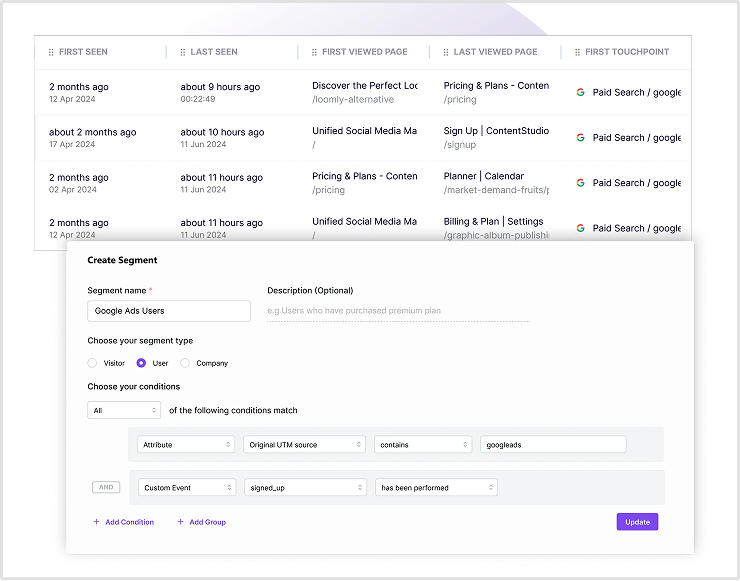
2. Google Analytics
Google Analytics (GA4) is the most popular analytics and tracking tool used by webmasters, businesses, bloggers, and SEO experts. It allows the admin to create subsets of users, sessions, and events through its segment builder. Thus, it provides audience segmentation to help users better understand their audience.
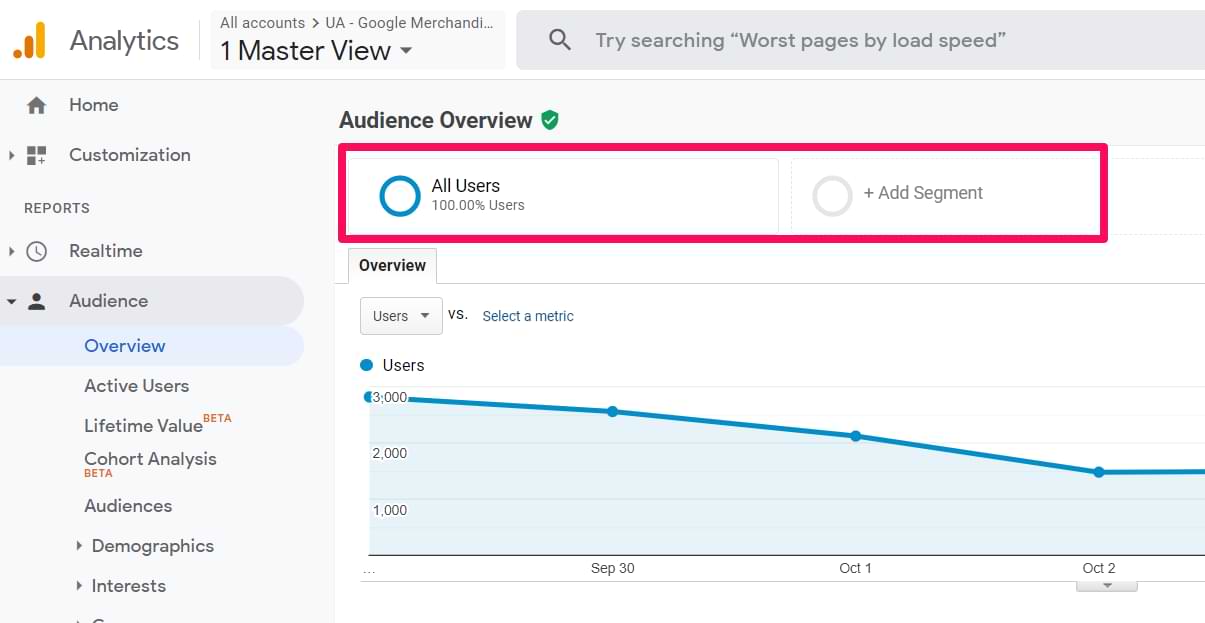
3. Mailchimp
MailChimp is a well-known email marketing software that offers many marketing solutions, such as email newsletters, automation, subscriber segmentation, and more. Marketers, brands, and experts use segmentation to reach a specific portion of the audience based on their requirements.
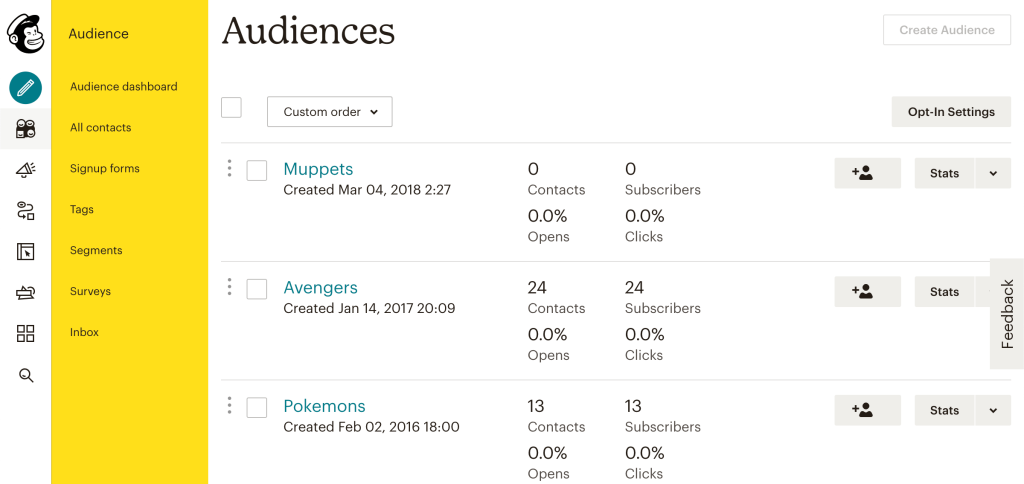
4. Segment.io
Segment.io is a leading data analysis dashboard that provides AI-powered data collection, analysis, and reporting. It allows users to build audiences through advanced AI-based technology and supports multichannel journey tracking and reporting. Segment.io offers an audience segmentation facility through Audience building and journey orchestration.
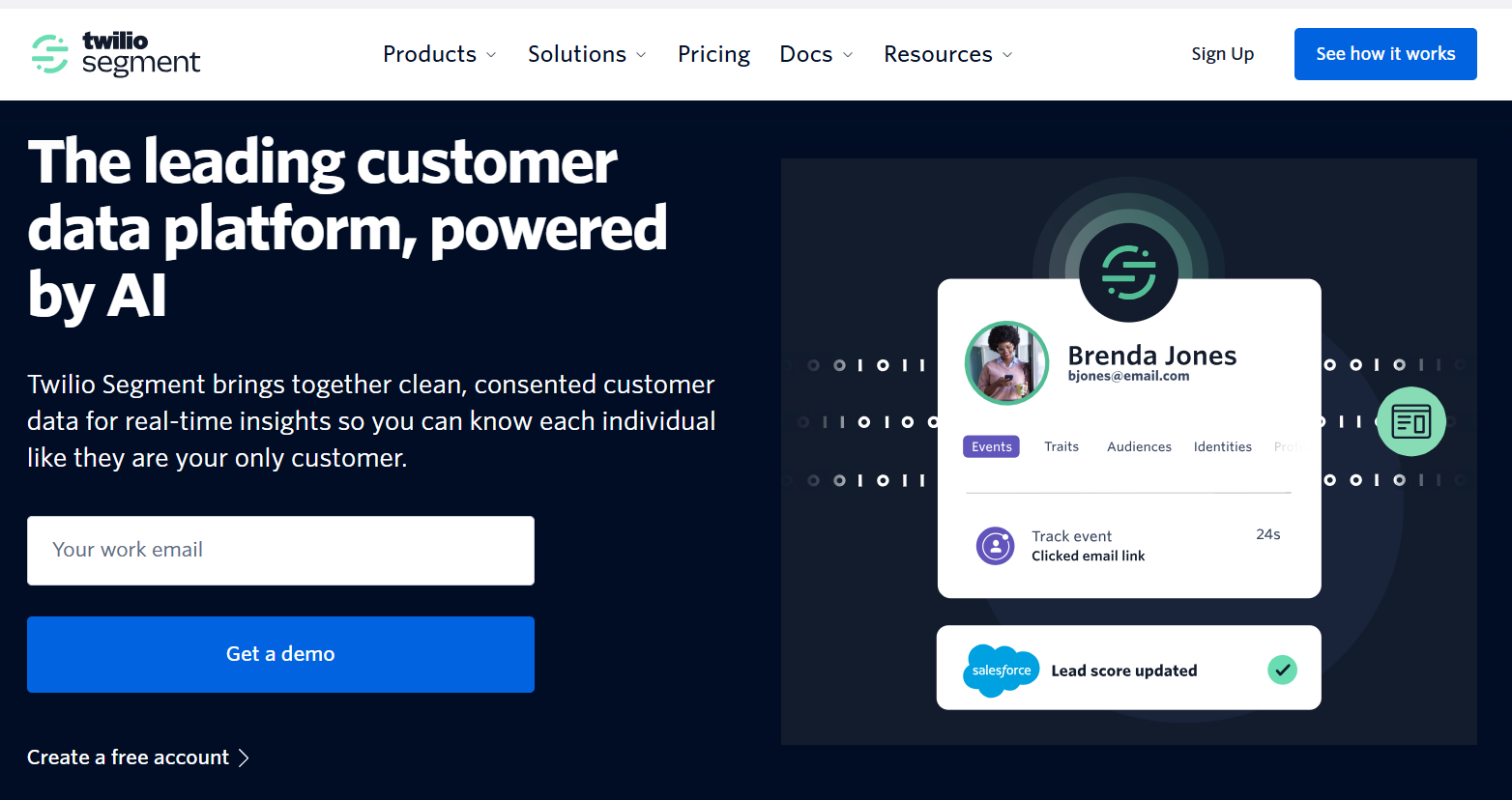
5. Heap
Heap is a powerful product analytics tool that provides essential data based on consumer behaviors. It has an intelligent system that understands digital marketing actions, personalized offers, and third-party data importing to provide a seamless audience segmentation experience.
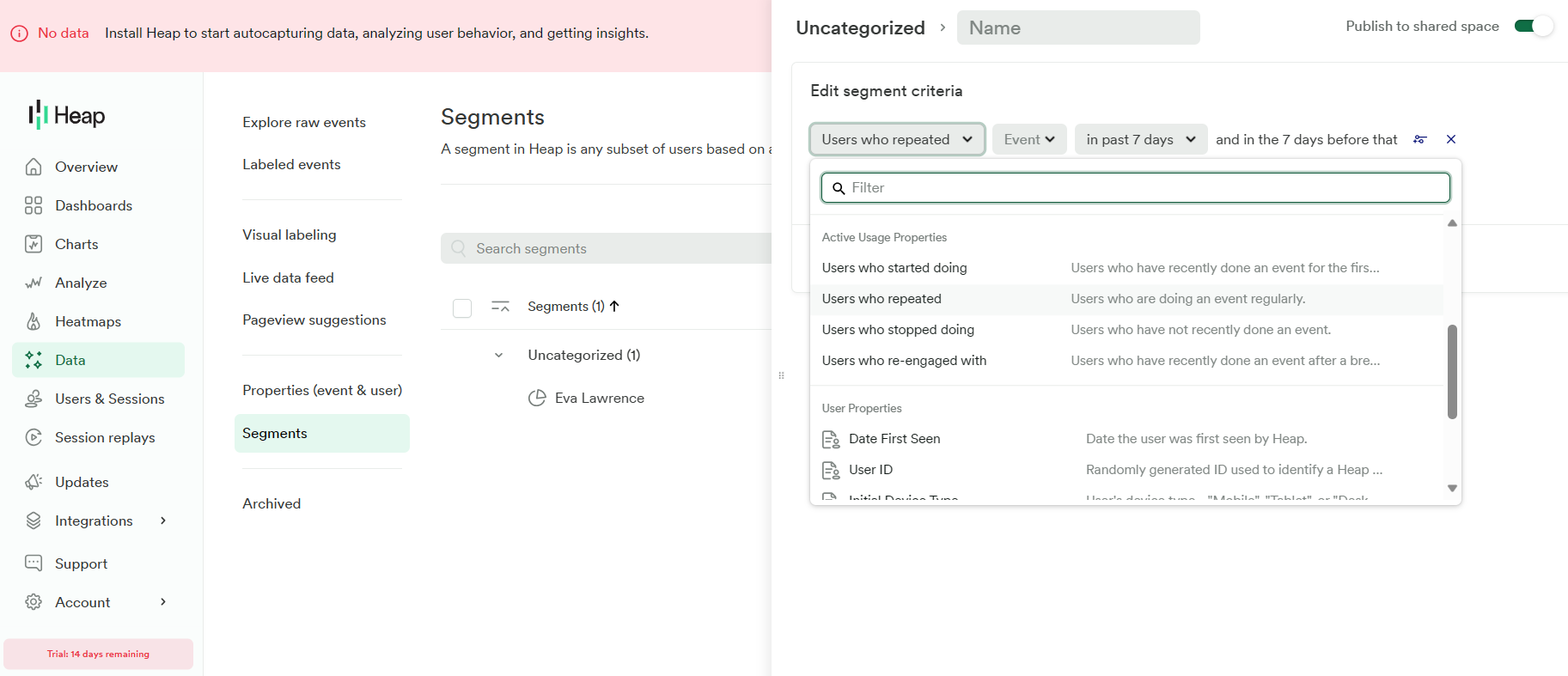
Conclusion
We went deep into the rabbit hole of audience segmentation and tried to explain the importance of this strategy. Moreover, we also tried to share essential tips to capitalize on the existing audience.
In a nutshell, it’s a strategy of refining your existing audience based on their actions, behaviors, and decisions and grouping them accordingly.
The cleaner your audience gets, the easier it becomes to convert them into paying customers. Therefore, it’s vital to understand and implement appropriate tactics to segment your audience and nurture them to better serve them.
Experience organized workflow with a unified social media management platform for agencies.
Try ContentStudio for FREE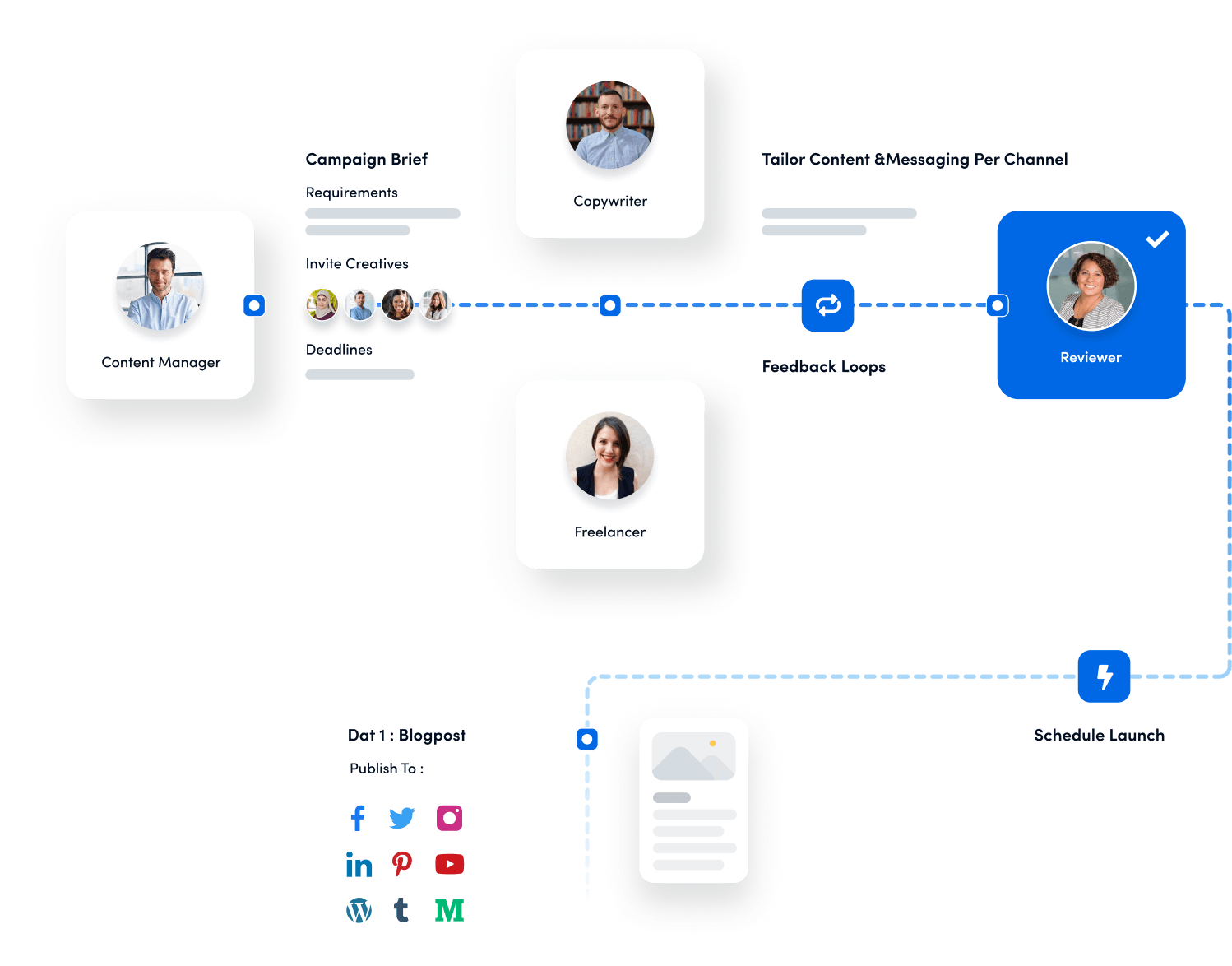
FAQs about audience segmentation
What are the 4 major segmentation categories?
The four main segmentation categories include demographic segmentation, geographic segmentation, behavioral segmentation, and psychographic segmentation.
What is an example of a target audience segment?
An example of a target audience segment can be the free plan users who were interested enough in the product to sign up for the free plan, and now you have the chance to offer them the paid plans. So, the free plan users can be an audience segment that can be targeted to offer a deal.
What is the target audience and segmentation?
A target audience is a group that can potentially be customers or users of the product. Segmentation divides the audience into a specific portion based on some common characteristics.
How can audience segmentation enhance your inbound marketing efforts?
Audience segmentation paves the way for conversion, creating a group of audiences with a common agenda, goals, or needs. It can also improve inbound marketing efforts because the segment may be offered something specific that they are interested in or potentially need at the time of the offer.
Subscribe to our weekly newsletter!
Join over 14,500+ agencies and brands to stay informed with weekly social media updates, blogs, strategies, and expert tips right into your inbox!
